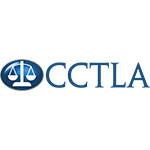Personal injury and civil justice attorney Brooks Cutter is a leading advocate for consumer justice and protecting the rights of the severely injured…
Erb’s Palsy and Cerebral Palsy Birth Injuries
Cerebral palsy is the most common childhood motor disability, with prevalence around the world ranging from 1.5 to more than 4 per 1,000 live births. Erb’s palsy is less common—affecting one to two births per 1,000—but can still have lifelong effects. Both cerebral palsy and Erb’s palsy have been linked to birth injuries

Quick Links
Cerebral Palsy Birth Injury
Cerebral palsy is a condition caused by damage to a developing brain, often before or during birth. It is marked by issues with movement, muscle tone, or posture, including unusual reflexes, limb rigidity, abnormal posture, and involuntary movement. Cerebral Palsy that is linked to brain damage that occurred before or during birth is called congenital cerebral palsy.
Evidence shows that the brain damage that causes cerebral palsy can happen before birth, during birth or during the first few years of child’s life.
Although cerebral palsy can develop before birth, there is evidence that a traumatic head injury or a lack of oxygen to the brain during delivery can also cause cerebral palsy birth injury. Previously, it was believed that cerebral palsy was mainly caused by a lack of oxygen; while experts still believe lack of oxygen is a cause, it might be a cause in only a small number of cases.
Cerebral palsy might affect one limb or one side of the body, or it might affect the entire body. Cerebral palsy itself does not get worse with age, but issues such as muscle rigidity might worsen without proper treatment.
Spastic cerebral palsy—the most common kind, making up approximately 70 percent of all cerebral palsy cases. It is marked by stiff, jerky or exaggerated movements (hypertonia) and is caused by damage to the brain’s motor cortex, which controls voluntary movement. It can also be caused by damage to the pyramidal tracts, which assist in sending signals to the muscles.
Athetoid/dyskinetic cerebral palsy (non-spastic cerebral palsy)—makes up approximately 10 percent of cases. This is marked by involuntary movement in the face, torso, and limbs, and is caused by damage to the basal ganglia, which control balance and coordination, or the cerebellum, which controls balance and coordination.
Ataxic cerebral palsy—makes up approximately 10 percent of cases. It is marked by lack of coordination and balance and caused by damage to the cerebellum, which connects to the spine.
A mixture of the above three—makes up approximately 10 percent of cases. It is caused by damage that extends beyond one location in the brain.
Cerebral Palsy Risk Factors
- Risk factors for congenital cerebral palsy include:
- Low birthweight (fewer than 5.5 pounds at birth)
- Premature birth (before then 37th week of pregnancy
- Multiple births
- Assisted reproductive technology
- Infections during pregnancy (infections lead to increased proteins that cause inflammation, which can cause brain damage)
- Jaundice and kernicterus
- Maternal medical conditions, including thyroid problems, seizures or intellectual disabilities
- Birth complications, including uterine rupture, umbilical cord problems, or detachment of the placenta.
Acquired cerebral palsy involves brain damage that occurs beyond 28 days of birth. Usually, acquired cerebral palsy is associated with an infection, an injury, or issues with blood flow to the brain.
Cerebral Palsy Symptoms
Symptoms of cerebral palsy vary widely between affected individuals and may include:
- Muscle tone issues (stiffness or floppiness)
- Spasticity
- Rigidity
- Involuntary movements
- Delays in motor skills milestones
- Lack of muscle coordination
- Difficulty walking
- Delays in speech
- Excessive drooling
- Seizures
Additionally, the same brain damage that caused the cerebral palsy may cause other neurological issues, including
- Difficulty with vision, speech or hearing
- Intellectual or learning disabilities
- Chronic pain
- Seizures
Cerebral Palsy Diagnosis
There are several steps involved in diagnosing cerebral palsy. These include developmental monitoring, which involves tracking the child’s growth and development; development screening, which involves testing for developmental, motor or movement delays; and developmental and medical evaluations, which involve a closer look at the child’s motor skills, muscle tone and posture.
If you are concerned your child might have cerebral palsy, it is important to contact a doctor or nurse to share concerns and seek a referral to a specialist, who can assist in a diagnosis.
Cerebral Palsy Treatment
Treatment for cerebral palsy depends on the severity of the disorder. Individuals with mild cerebral palsy may not need full-time, permanent care, though they may require ongoing treatment to ensure symptoms don’t worsen.
Individuals with severe cerebral palsy, however, could require a lifetime of medical care and permanent, full-time caregivers. Some may also require additional medical assistance such as wheelchairs or braces.
In some cases, orthopedic surgery can help with cerebral palsy symptoms, such as movement disorders. Occupational therapy can help the child become more independent. Medications including anti-inflammatories, anti-spastics, and anticonvulsants may be prescribed as needed.
$23.5 Million
Settlement won for government fraud in a whistleblower case against one of the world’s largest medical device manufacturers
$240 Million
Settlement in a nationwide defective medical device case involving defective pacemakers and cardiac defibrillators against Boston Scientific and Guidant
$12.95 Million
John R. Parker recently handled a case against the medical device company, Biotronik, Inc. for claims that they defrauded state and federal government agencies.
$4.7 Million
Brooks Cutter and John Parker obtained the settlement on behalf of our whistleblower clients in a case involving government fraud.
Erb’s Palsy Birth Injury
Erb’s palsy is a brachial plexus injury in which an infant’s upper nerves are damaged, causing paralysis to the upper arm. It is often caused by delivery issues including breech birth or extended labor. Typically, Erb’s palsy is caused when the infant’s shoulders become stuck in the birth canal or when the infant’s neck is stretched.
Erb’s palsy is not considered life-threatening but it can have a long-term effect on the child. Because nerves affect growth, the arm affected by an Erb’s palsy birth injury could be noticeably smaller than the other arm.
Approximately one to two of every 1,000 live births involve Erb’s palsy.
Erb’s Palsy Causes
Erb’s palsy is caused by trauma during birth, typically in one of three ways:
- When the neck is stretched at an awkward angle
- When the shoulders are pulled on forcefully
- When the baby is delivered in breech birth and the shoulders become stuck in the birth canal.
Erb’s Palsy Symptoms
Symptoms of Erb’s palsy include:
- Weakness in one arm
- Loss of feeling in one arm
- Partial or full paralysis of the arm
Erb’s Palsy Treatment
Although Erb’s palsy patients can fully recover, recovery can take a few years and may require surgery on the damaged nerves. Treatment can be costly and there is no guarantee the infant will recover full use of the arm. Among the treatments for Erb’s palsy are daily physical therapy, range-of-motion exercises, surgical nerve graft, and surgical nerve transfer.
Erb’s Palsy and Cerebral Palsy Lawyers
At Cutter Law, we understand the devastation and heartbreak that can be caused by a birth injury. We’re committed to helping our clients get the justice they deserve for any birth injuries that are caused by medical malpractice.
Our lawyers are available to discuss the circumstances of your child’s birth injury and advise you of your rights and options. If your doctor failed to notice warning signs of cerebral palsy or Erb’s palsy, failed to react properly to distress during labor, or failed to adequately monitor the mother for signs of birth trauma—such as high blood pressure—you could be entitled to compensation.
Our birth injury attorneys in Sacramento and Oakland have a track record of success in medical and birth injury litigation, and have obtained hundreds of millions of dollars for our clients by refusing to back down against health care providers that mismanage patient care. We are here to help you and will fight tirelessly to protect your rights and the rights of your infant.
Testimonials
“I’m so glad I chose Cutter Law to take my case. They are ethical, hardworking, capable and very willing to represent individual clients who are opposing companies.”
I would like to express my gratitude for the way you and your firm handled my lawsuit. At all times, I felt my interest was held in a very professional way. I was very satisfied with the settlement that was awarded to me. If the need ever arises, I would most assuredly recommend your firm to anyone.
- by Brooks Cutter
- on
Schedule A Free Case Review
"*" indicates required fields
Our Office Locations
Sacramento Office
401 Watt Avenue Suite 100
Sacramento, CA 95864
Phone: 916-290-9400
Oakland Office
Cutter Law P.C.
1999 Harrison Street Suite 1400
Oakland, CA 94612









